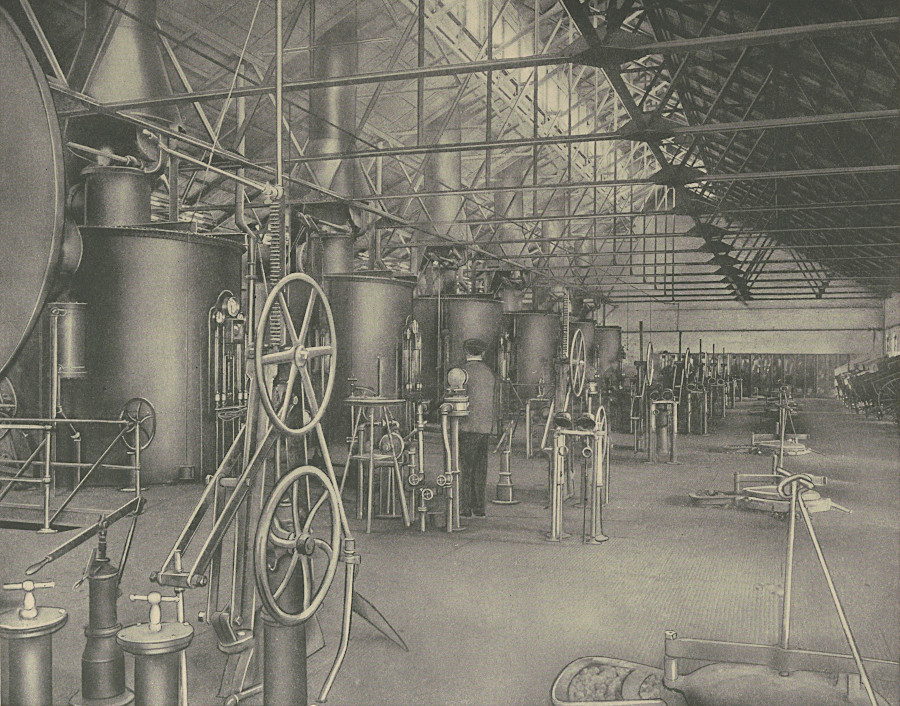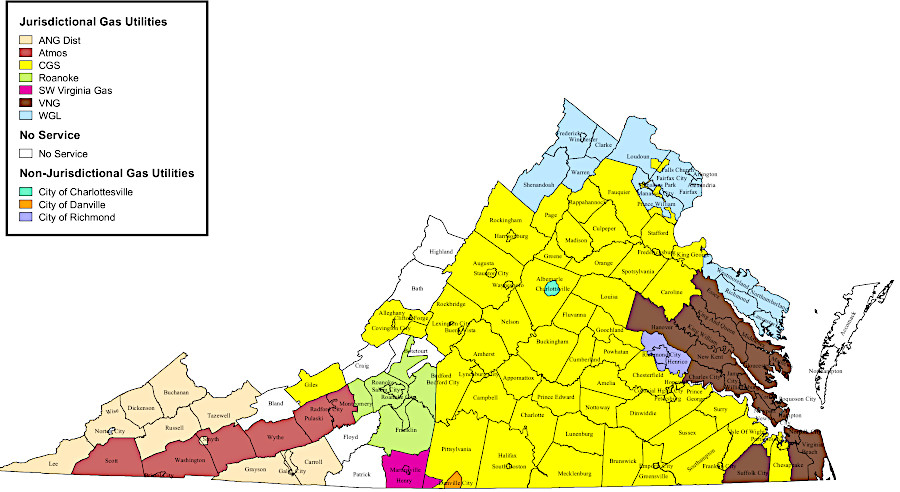
before the 1940's, gas was generated by heating coal
Source: Library of Congress, Carburetted water gas

before the 1940's, gas was generated by heating coal
Source: Library of Congress, Carburetted water gas
Until natural gas wells and transmission lines were developed in the 1940's, "coal gas" was produced by heating bituminous coal in an oxygen-free tank. Using crude oil or naptha as a feedstock, alternating blasts of air and water over hot coke produced "carburetted water gas." Both types of gas were primarily combustible carbon monoxide and hydrogen. The main use initially was for lighting, then later for heating or cooking. Coal tar residue at sites where gas was manufactured may require a modern environmental cleanups.1
Establishing municipal ownership of gas distribution systems was a controversial issue after the Civil War. Private corporations, particularly the Standard Oil trust, sought to block public ownership. There were nine cities in the United States in 1891 that had municipal natural gas manufacturing, storage and distribution utilities, including Alexandria (1853), Charlottesville (1876), Danville (1876) and Richmond (1852).
At the time, Richmond stored almost 200 million cubic feet in its "holder" at the gas works in Fulton Alexandria stored only 10% of that amount, roughly 20 million cubic feet. The system at Danville had around 11 million cubic feet, and Charlottesville had less than 7 million cubic feet at its gas works on Starr Hill. Over 10% was lost through leaks in the storage tanks and delivery mains.
There were eight private companies delivering gas in Virginia in 1891. The four public companies charged $1.50 per cubic foot or less, while seven of the eight private companies had higher prices. Price differentials were justified by claims that the utilities paid different prices for coal, and the coal quality varied in the amount of gas that could be produced per ton.2
Danville's gas system was constructed in 1875 by private investors who had received a 24-year franchise from the city council. In 1876, the city purchased the facility.3

the State Corporation Commission does not regulate the municipal gas utilities in Charlottesville, Danville, and Richmond
Source: State Corporation Commission, Regulated Companies & Service Map
Today Virginia has three jurisdictions that distribute natural gas - Charlottesville, Danville, and Richmond.4
In 2019, Charlottesville officials committed to a reduce greenhouse gas emissions 45% by 2030 and to achieve carbon neutrality by 2050. That would require reducing and potentially eliminating the use of natural gas, obviously impacting the utility's business model.
The "Charlottesville Natural Gas Decarbonization Study" in 2022 projected that the city would reach the 45% target by 2030 for emissions from its natural gas operations, by using carbon offsets and energy efficiency measures.5
Richmond planned in 2021 to phase out its natural gas utility as part of the effort to reduce greenhouse gas emissions. The city charter will have to be changed; it currently mandates operating a gas utility system. The General Assembly passed legislation in 2022 requiring customers be given at least three years notice before closing down the gas system.6